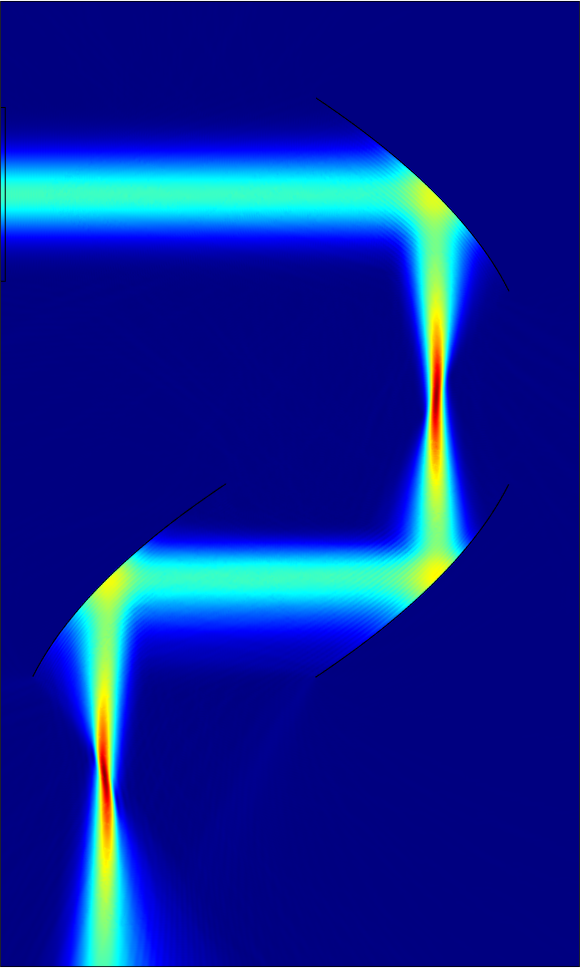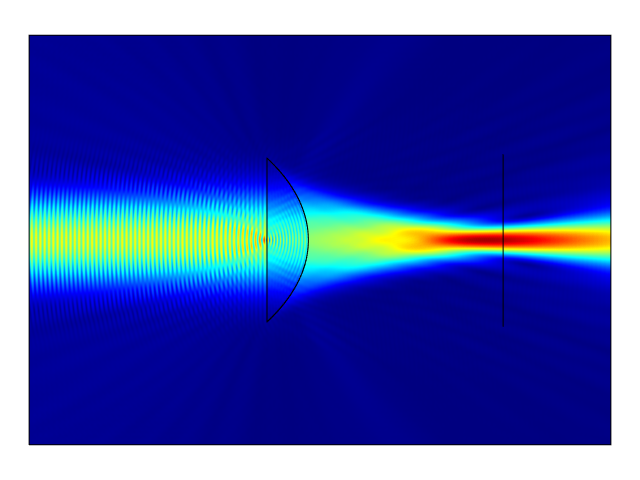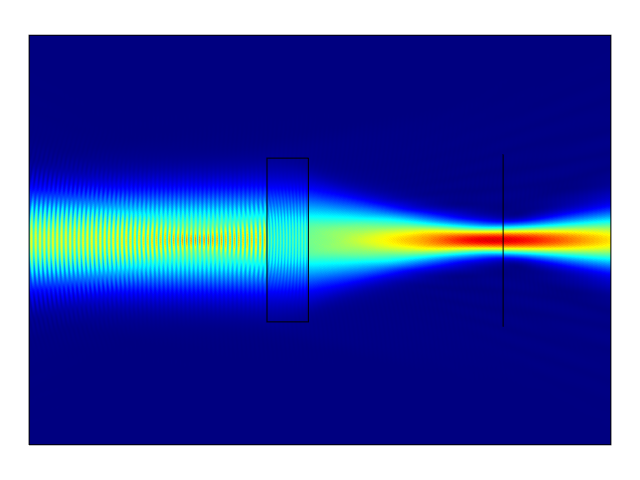Misc. Numerical Simulations
We often use parabolic mirrors to act as focusing reflectors that are very low loss.
It is common in a pump-probe experiment to use a parabolic mirror with a small hole
for another laser to propagate through (the probe). However, this hole causes an imperfection in the
operation of the mirror and I wanted to see that effect.
These are 2d FEM results. With a 400 GHz beam incident on a series of 3 cm focal length
parabolic lenses. The final mirror has a 1.2 mm hole. A reference with no hole is shown for comparison.


There are multiple lens geometries that share the same focal length, this shows 3 regular type lenses (n = 1.41). And compares with a
gradient index lens, which is rectangular in geometry but has a non constant index of refraction.
These lenses all share a focal length of 2.5 cm and diameter of 2 cm. A 300 GHz beam is incident from
the left which is then focused to a small waist before expanding agian. The ripples in the wave to the left (and inside)
of the lens indicate a standing wave due to reflection.









